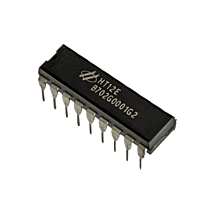


HT12E: RF Encoder IC
Product Details
Data Encoding: The primary function of the HT12E is to encode parallel data inputs into a serial format suitable for transmission over RF. It accepts a 12-bit parallel data input and converts it into serial data, making it easier to transmit wirelessly.
Address Inputs: The HT12E typically has a set of address pins (A0 to A7) that allow you to set a unique address for different transmitter-receiver pairs. This addressing ensures that the receiver only responds to signals with the correct address, preventing interference from other devices.
Data Inputs: In addition to the address pins, the IC has data pins (D0 to D11) where you connect the digital data you want to encode. These pins accept the parallel data you wish to transmit.
Sync Pulse: The HT12E generates a synchronization pulse (SYNC) to indicate the start of data transmission. This pulse is used by the receiver to synchronize with the incoming data.
Power Supply Voltage: The IC typically operates with a power supply voltage in the range of 2.4V to 12V, making it compatible with various battery-powered and low-power applications.
Applications: The HT12E is commonly used in remote control systems, wireless security systems, garage door openers, wireless doorbells, and other applications where wireless communication between a transmitter and a receiver is required.
RF Transmitter Module: To use the HT12E effectively, it is often paired with an RF transmitter module. The encoded serial data from the HT12E is then transmitted by the RF module to a receiver.


